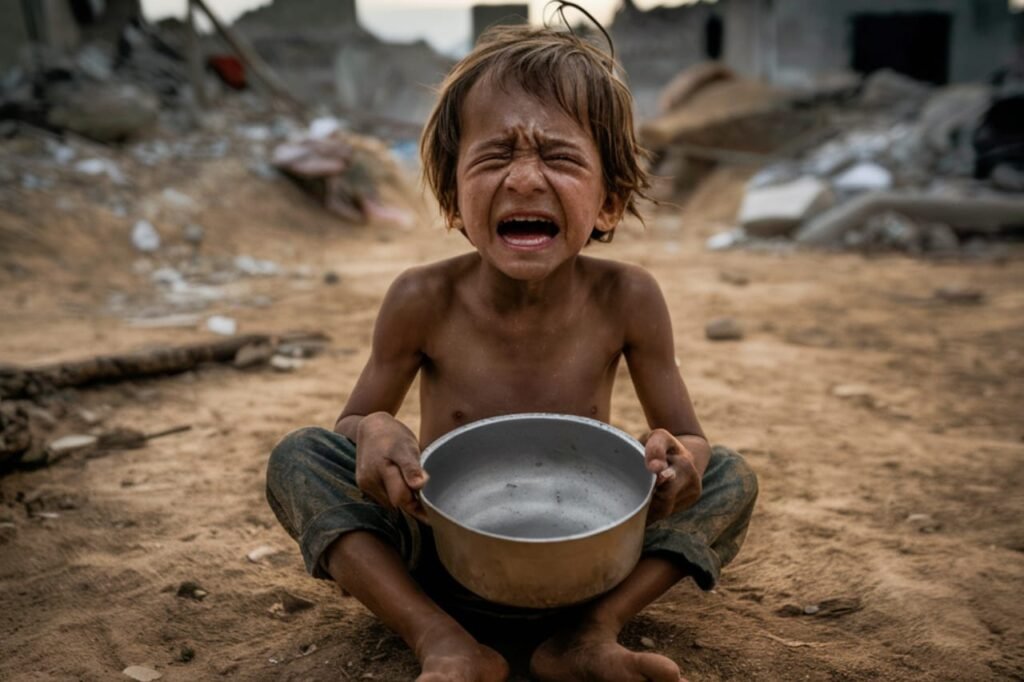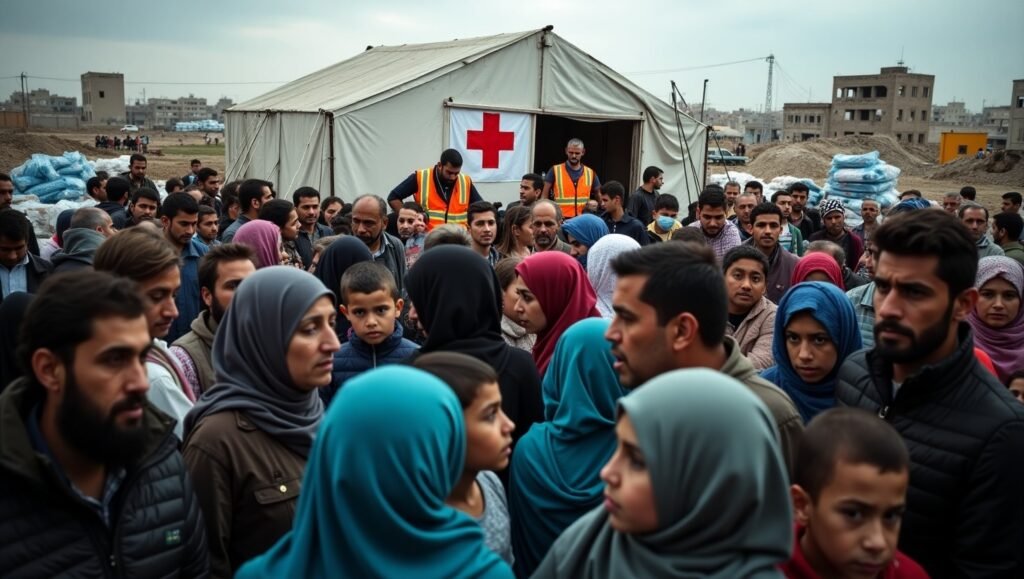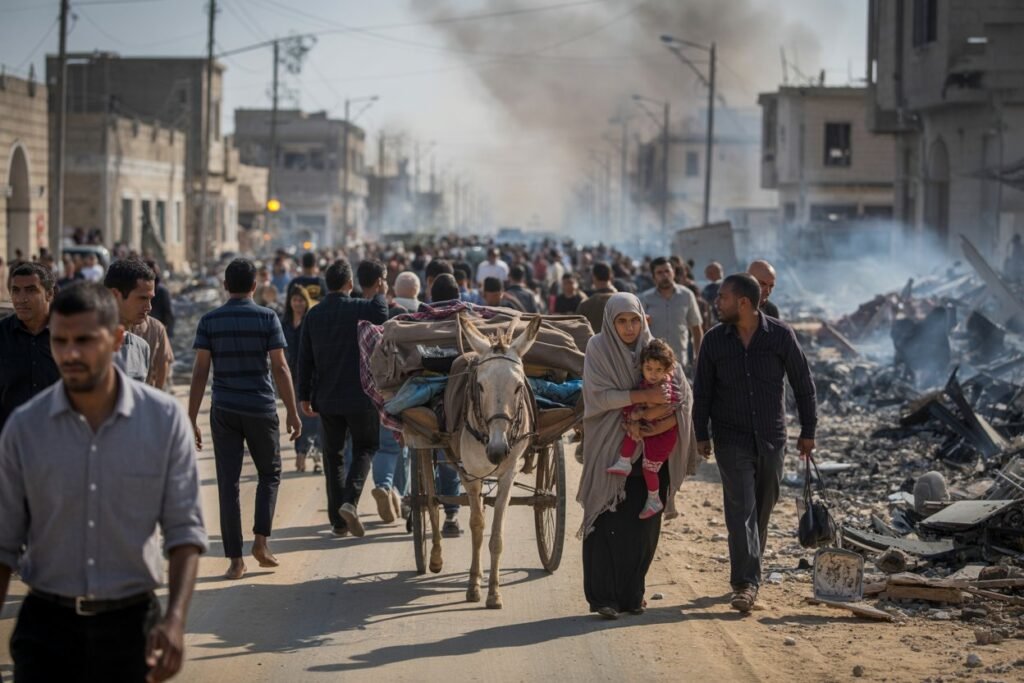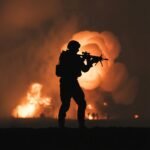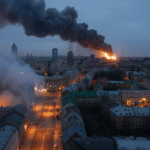- Home
- ScienceDiscover the latest updates from across the United States, including politics, culture, economy, and trending stories. Stay informed on the key events shaping the nation and the topics everyone’s talking about.
- EconomyOur Economy page provides comprehensive reporting on international financial systems, trade dynamics, development economics, and macroeconomic policy. Drawing on expert analysis and institutional data, we illuminate the interconnected nature of global markets and their real-world implications for governance and inequality.
- HealthWe examine global health issues through the lens of policy, access, equity, and innovation. From pandemics and healthcare infrastructure to mental health and biotechnological breakthroughs, our health reporting is rooted in empirical data, expert insight, and a commitment to understanding health as a cornerstone of human development.
- HistoryThis section revisits critical junctures in world history, emphasizing the relevance of historical events in shaping present-day global affairs. Through scholarly narratives and fact-anchored storytelling, we uncover the often-overlooked patterns, power structures, and human decisions that have left a lasting imprint on international relations and societies.
- PoliticsOur Politics section offers in-depth analysis of international political developments, ideological movements, and institutional shifts. With a focus on global governance, diplomacy, and geopolitical strategy, we provide nuanced reporting that transcends partisan narratives and situates events within their broader historical and structural contexts.
- War & ConflictThis section delivers meticulous coverage of international conflicts, civil wars, military strategies, and peace negotiations. We prioritize geopolitical context, long-term impact, and the role of state and non-state actors—eschewing sensationalism in favor of sober, historically informed analysis.
- TechnologyWe critically examine the global technology landscape—from artificial intelligence and cybersecurity to digital policy and ethical innovation. Our reporting focuses not just on what is being built, but why it matters: how technological change influences governance, economy, security, and human life on a planetary scale.
- Features
- Home
- ScienceDiscover the latest updates from across the United States, including politics, culture, economy, and trending stories. Stay informed on the key events shaping the nation and the topics everyone’s talking about.
- EconomyOur Economy page provides comprehensive reporting on international financial systems, trade dynamics, development economics, and macroeconomic policy. Drawing on expert analysis and institutional data, we illuminate the interconnected nature of global markets and their real-world implications for governance and inequality.
- HealthWe examine global health issues through the lens of policy, access, equity, and innovation. From pandemics and healthcare infrastructure to mental health and biotechnological breakthroughs, our health reporting is rooted in empirical data, expert insight, and a commitment to understanding health as a cornerstone of human development.
- HistoryThis section revisits critical junctures in world history, emphasizing the relevance of historical events in shaping present-day global affairs. Through scholarly narratives and fact-anchored storytelling, we uncover the often-overlooked patterns, power structures, and human decisions that have left a lasting imprint on international relations and societies.
- PoliticsOur Politics section offers in-depth analysis of international political developments, ideological movements, and institutional shifts. With a focus on global governance, diplomacy, and geopolitical strategy, we provide nuanced reporting that transcends partisan narratives and situates events within their broader historical and structural contexts.
- War & ConflictThis section delivers meticulous coverage of international conflicts, civil wars, military strategies, and peace negotiations. We prioritize geopolitical context, long-term impact, and the role of state and non-state actors—eschewing sensationalism in favor of sober, historically informed analysis.
- TechnologyWe critically examine the global technology landscape—from artificial intelligence and cybersecurity to digital policy and ethical innovation. Our reporting focuses not just on what is being built, but why it matters: how technological change influences governance, economy, security, and human life on a planetary scale.
- Features
Now Reading: Deir al Balah Attack: Gaza Ceasefire in Danger
-
01
Deir al Balah Attack: Gaza Ceasefire in Danger
- Home//
- Science//Discover the latest updates from across the United States, including politics, culture, economy, and trending stories. Stay informed on the key events shaping the nation and the topics everyone’s talking about.
- Economy//Our Economy page provides comprehensive reporting on international financial systems, trade dynamics, development economics, and macroeconomic policy. Drawing on expert analysis and institutional data, we illuminate the interconnected nature of global markets and their real-world implications for governance and inequality.
- Health//We examine global health issues through the lens of policy, access, equity, and innovation. From pandemics and healthcare infrastructure to mental health and biotechnological breakthroughs, our health reporting is rooted in empirical data, expert insight, and a commitment to understanding health as a cornerstone of human development.
- History//This section revisits critical junctures in world history, emphasizing the relevance of historical events in shaping present-day global affairs. Through scholarly narratives and fact-anchored storytelling, we uncover the often-overlooked patterns, power structures, and human decisions that have left a lasting imprint on international relations and societies.
- Politics//Our Politics section offers in-depth analysis of international political developments, ideological movements, and institutional shifts. With a focus on global governance, diplomacy, and geopolitical strategy, we provide nuanced reporting that transcends partisan narratives and situates events within their broader historical and structural contexts.
- War & Conflict//This section delivers meticulous coverage of international conflicts, civil wars, military strategies, and peace negotiations. We prioritize geopolitical context, long-term impact, and the role of state and non-state actors—eschewing sensationalism in favor of sober, historically informed analysis.
- Technology//We critically examine the global technology landscape—from artificial intelligence and cybersecurity to digital policy and ethical innovation. Our reporting focuses not just on what is being built, but why it matters: how technological change influences governance, economy, security, and human life on a planetary scale.
- Features//
- Home
- War & Conflict
- Deir al Balah Attack: Gaza Ceasefire in Danger
Deir al Balah Attack: Gaza Ceasefire in Danger
Sera KevilWar & ConflictJuly 21, 202529 Views
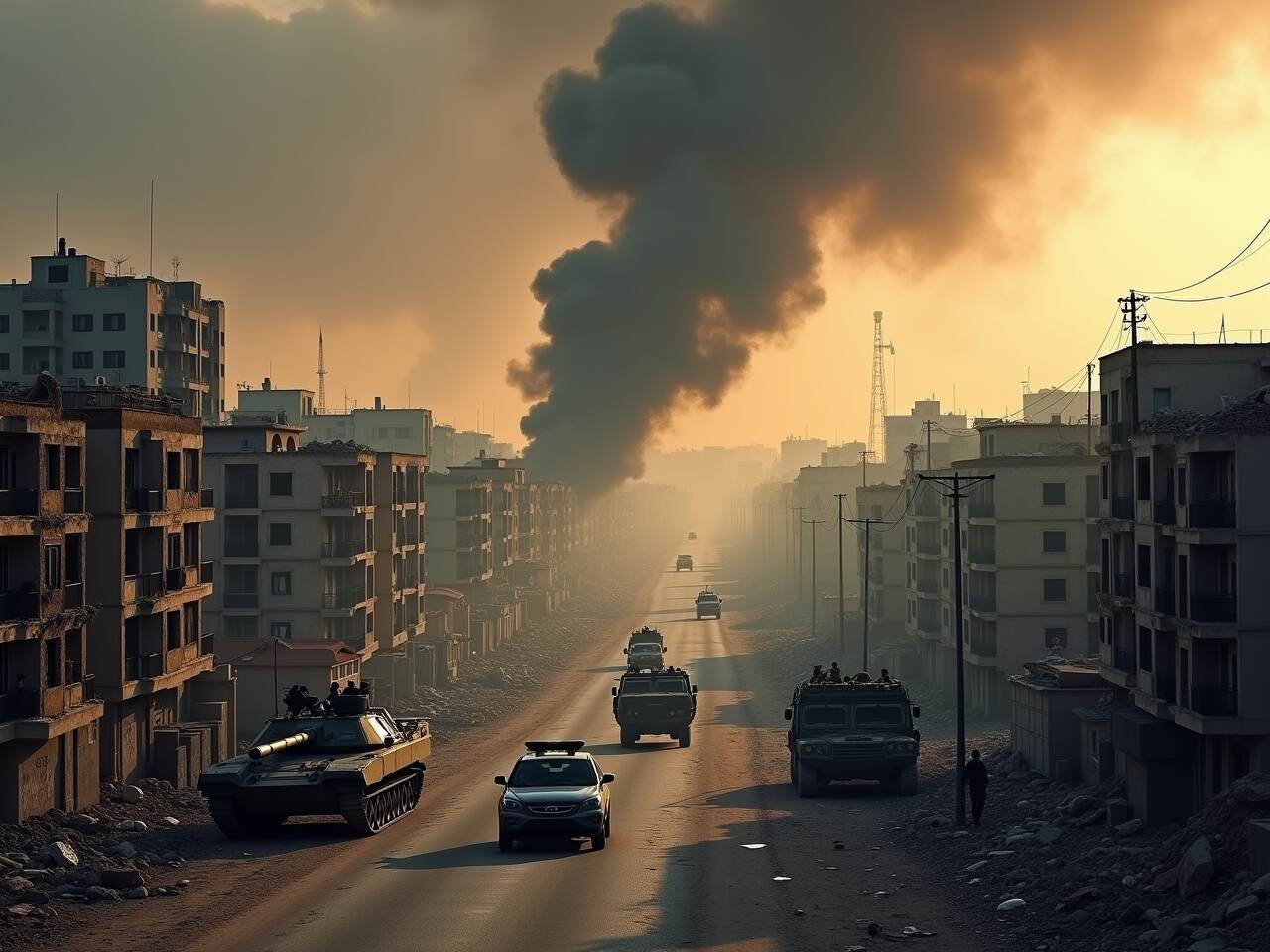
Deir al Balah, a central city in Gaza, is experiencing its first full-scale ground assault by Israeli forces. This breakthrough operation threatens to derail any hope of a ceasefire. With hundreds of tanks, artillery, and airstrikes, the assault began as thousands of civilians were ordered to evacuate, and the humanitarian crisis intensified. This article breaks down the strategic stakes, the civilian impact, the regional fallout, and what comes next.
Why Deir al Balah Matters
Positioned between Gaza City and Khan Younis, Deir al Balah occupies a strategically vital corridor. Its control enables the IDF to sever north–south supply lines and fragment Gaza into isolated zones. According to the UN OCHA, evacuation orders now affect over 87.8% of Gaza, forcing more than 2.1 million people into just 12% of the territory (Cadena SER). Importantly, this marks the first ground offensive in Deir al Balah since the war began in October 2023 (Deutsche Welle).
Military Strategy: Beyond Tunnels and Targets
The IDF states the operation is aimed at Hamas infrastructure and tunnels, but analysts suggest deeper motives:
- Hostage leverage: With reports of hostages held in the area, the invasion adds pressure for concessions (The Guardian).
- Diplomatic signaling: Timing the offensive before ceasefire talks signals stance, strength, and urgency to mediators and adversaries.
Analysts from the Foundation for Defense of Democracies suggest that Deir al Balah may serve as a critical indicator of Hamas’s remaining strength—and perhaps its final stronghold in central Gaza (FDD).
Humanitarian Fallout: Crisis Amplified
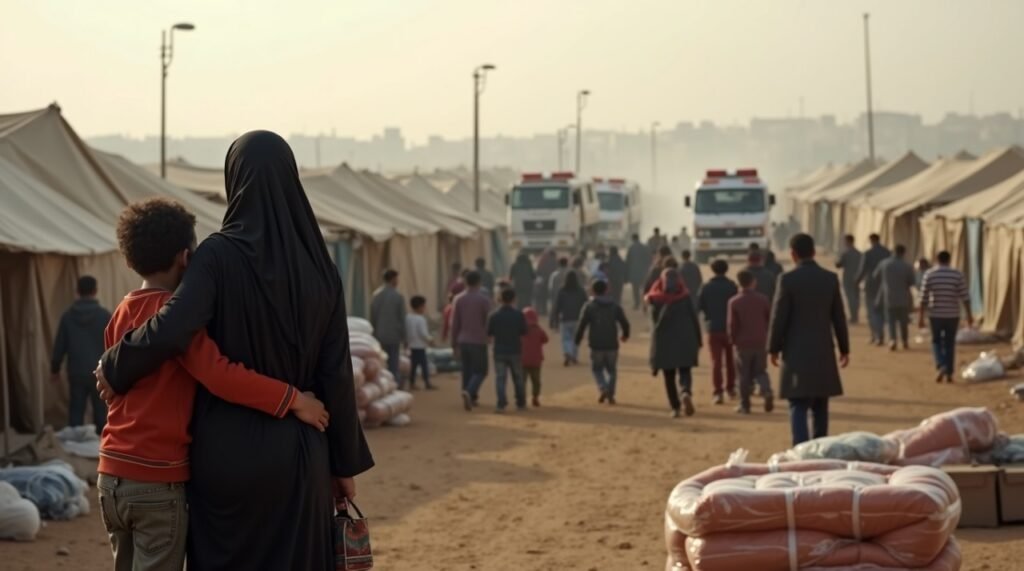
Initially, at least three people died, and over 1,000 families were displaced due to evacuation orders (El País). New displacement targets between 50,000–80,000 residents, relocated to already crowded camps like Al‑Mawasi (The Times).
According to UN data, over 2.1 million Gazans are now squeezed into just 12% of the land, with essential services collapsed (El País).
The UN World Food Programme also highlighted a deadly incident where IDF snipers and tanks fired at civilians seeking aid, causing dozens of casualties (AP News).
Ceasefire at Risk
Diplomacy had gained momentum ahead of a UN-backed delegation visit. But this offensive appears aimed at gaining leverage, not peace:
- Israel projects resolve before negotiations.
- Hamas is under increasing military and diplomatic pressure to release the captives.
- Regional mediators like Egypt and Qatar are now compelled to rethink their strategies as the conflict dynamics evolve.
This aggressive move could derail even emerging ceasefire discussions unless third parties secure guarantees fast.
Most Recommanded:
Regional Echoes and Reactions
- Egypt, Jordan, and Turkey condemned the attack as illegal under international law (El País, Cadena SER).
- Iran termed it a “war crime,” hinting at possible escalation in Lebanon (El País, Deutsche Welle).
- The U.S. maintained support for Israel’s right to self-defense but urged humanitarian protections (Financial Times).
- Pressure is mounting from inside Israel, where some call for ceasefire to secure hostages (Financial Times).
Media Landscape: Controlling the Narrative
Israel has restricted journalists and cut off internet access in Deir al Balah. Citizen-journalists report being silenced, making independent verification nearly impossible. The information void risks allowing dominant narratives to prevail—without local voices heard.
Timeline of Key Events
July 17–18: Airstrikes begin; ground forces move.
July 19: Tank columns block main junctions.
July 20–21: Evacuations enforced, street clashes intensify, humanitarian convoys attacked (El País, AP News, Al Jazeera).
International Law & Accusations
Human rights groups, including Amnesty, warn of potential war crimes due to:
- Civilian-targeted strikes
- Blocking aid access
- Allegations of white phosphorus use under investigation
Public perception and diplomatic probes may increase soon.
What Happens Next? Four Scenarios
| Scenario | Description | Outcome |
| Full-scale extension | Move south toward Khan Younis | Heightened civilian harm, deeper fragmentation |
| Conditional ceasefire | International pressure leads to pause | Possible hostages release, humanitarian relief |
| Regional escalation | Lebanon front opens, Hezbollah responds | Multiple fronts, higher risk |
| Diplomatic breakthrough | New US/Egypt pressure, partial truce | Short-term calm, more talks |
Strategic & Historical Context
Historically, Deir al Balah served as a peaceful farming center and became a base for Palestinian administration after 1994. Its invasion marks not just tactical gain but a psychological blow. Control here shifts narratives and stakes.
The assault on Deir al Balah is far more than another military push—it could decide Gaza’s fate. With an overwhelmed population, impending famine, and depleted services, this offensive risks nullifying ceasefire efforts.
Central Gaza is now the flashpoint. Whether diplomacy catches up remains to be seen. At present, the path toward peace runs through Deir al Balah—marked by conflict rather than resolution.












